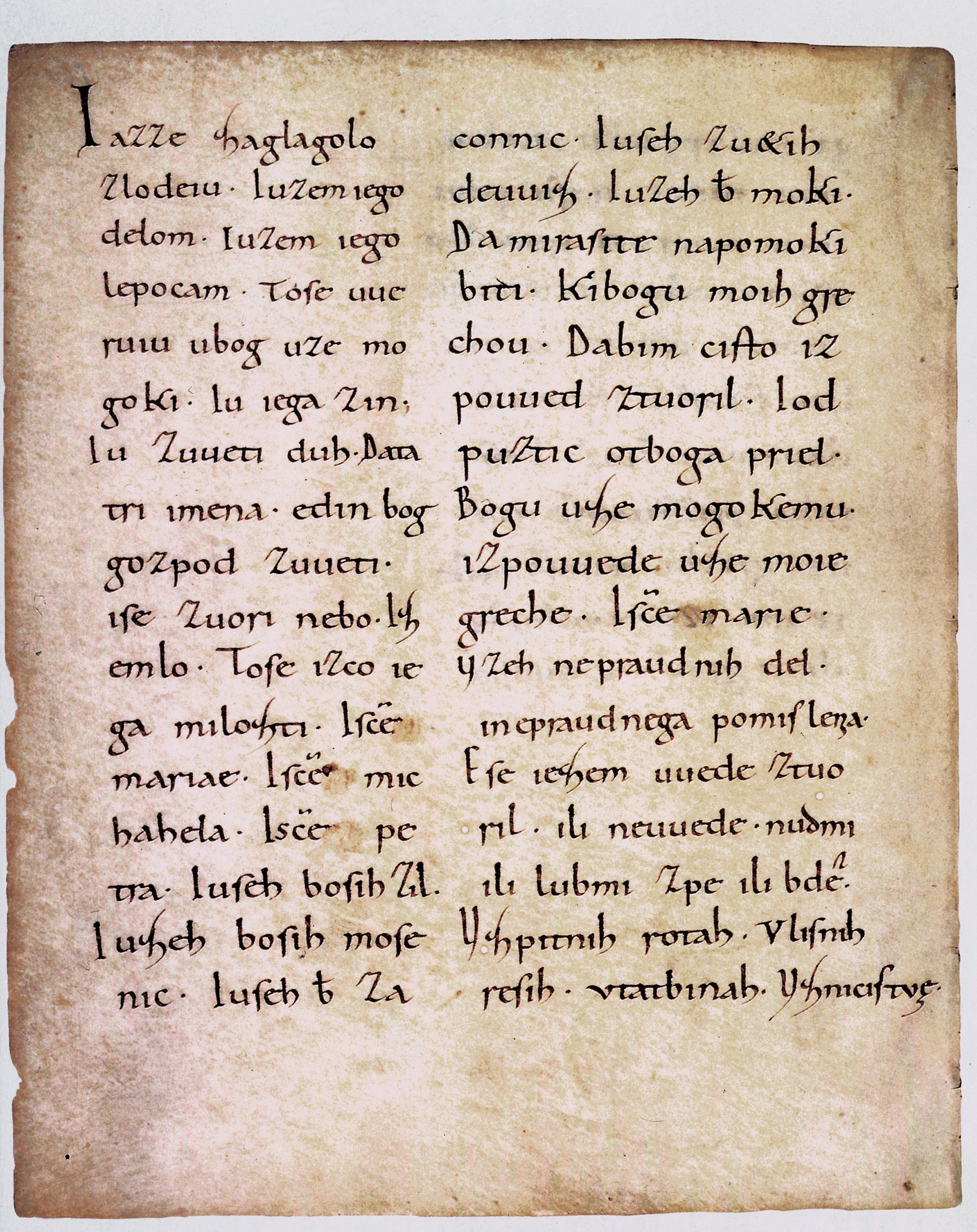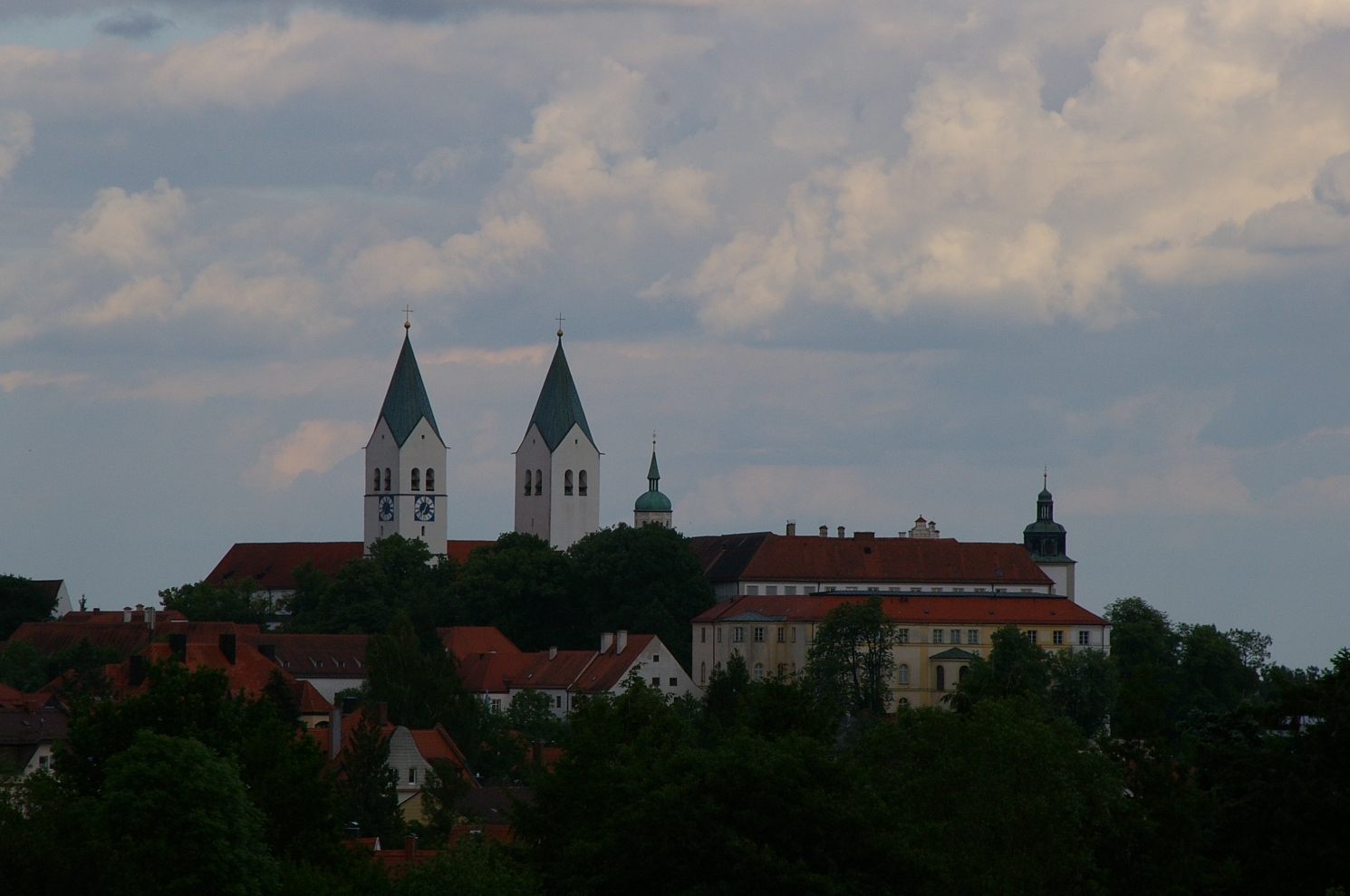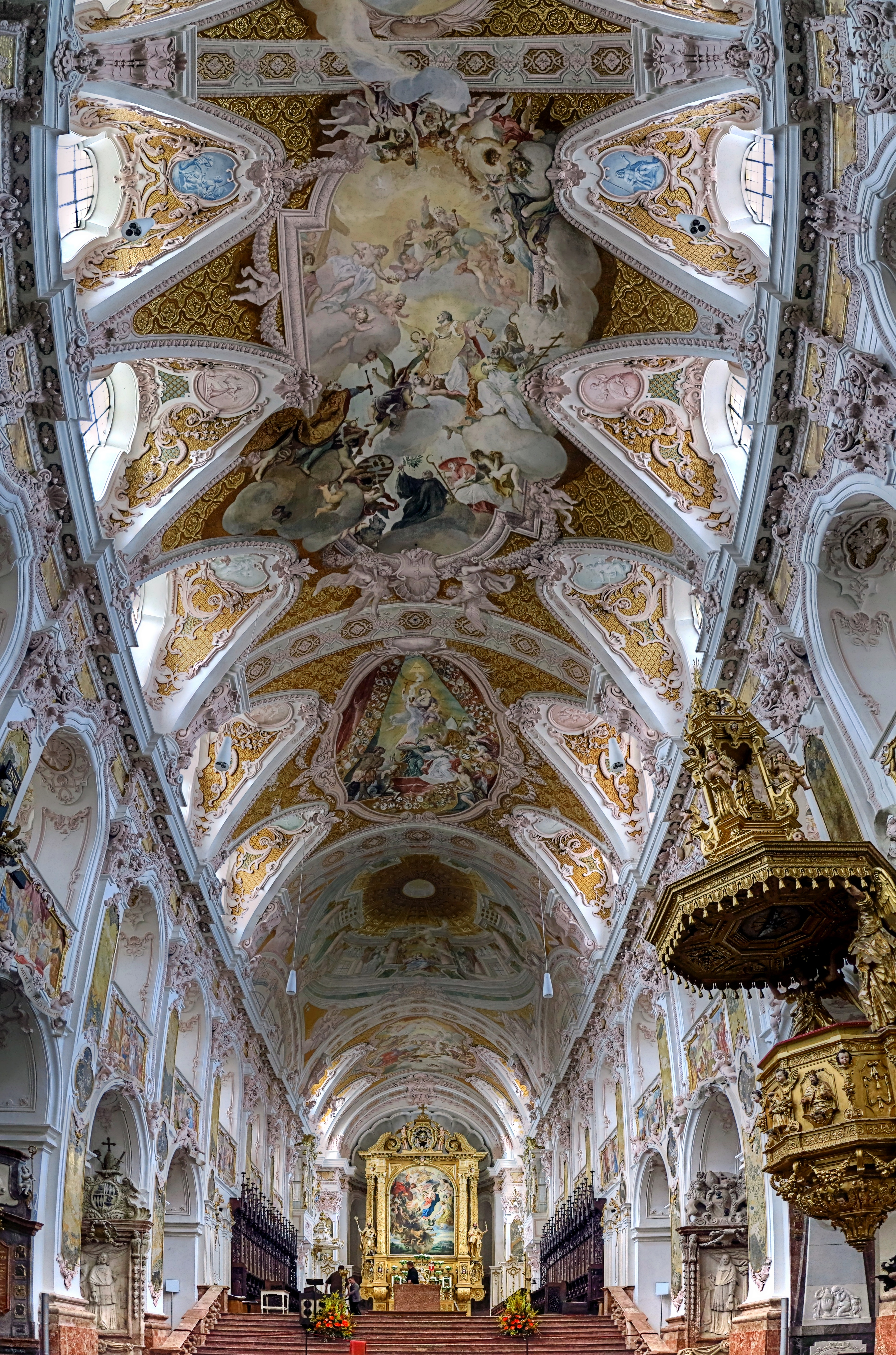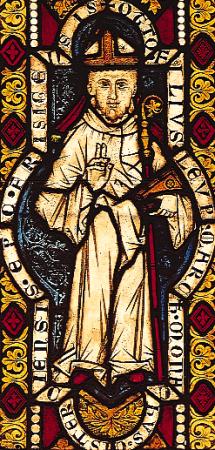|
Freising
Freising () is a university town in Bavaria, Germany, and the capital of the Freising ''Landkreis'' (district), with a population of about 50,000. Location Freising is the oldest town between Regensburg and Bolzano, and is located on the Isar river in Upper Bavaria, north of Munich and near the Munich International Airport. The city is built on and around two prominent hills: the Cathedral Hill with the former Bishop's Residence and Freising Cathedral, and Weihenstephan Hill with the former Weihenstephan Abbey, containing the oldest working brewery in the world. It was also the location of the first recorded tornado in Europe. The city is 448 meters above sea level. Cultural significance Freising is one of the oldest settlements in Bavaria, becoming a major religious centre in the early Middle Ages. It is the centre of an important diocese. Some important historical documents were created between 900 and 1200 in its monastery: * Freising manuscripts written in Slove ... [...More Info...] [...Related Items...] OR: [Wikipedia] [Google] [Baidu] |
Corbinian
Saint Corbinian ( la, Corbinianus; french: Corbinien; german: Korbinian; 670 – 8 September c. 730 AD) was a Frankish bishop. After living as a hermit near Chartres for fourteen years, he made a pilgrimage to Rome. Pope Gregory II sent him to Bavaria. His opposition to the marriage of Duke Grimoald to his brother's widow, Biltrudis, caused Corbinian to go into exile for a time. His feast day is 8 September. The commemoration of the translation of his relics is 20 November. Life Corbinian was born and baptized as Waldegiso at Châtres, near Melun, in Frankish territory. He was named after his father, who may have died when Corbinian was an infant. Soon after his father's death, his mother Corbiniana renamed Waldegiso to "Corbinian", after herself. Nothing else is known of his childhood. The early source for Corbinian's life is the ''Vita Corbiniani'' of Bishop Arbeo of Freising. He lived in Châtres on the road to Orléans as a hermit for fourteen years, near a church dedica ... [...More Info...] [...Related Items...] OR: [Wikipedia] [Google] [Baidu] |
Freising Manuscripts
The Freising manuscriptsAlso ''Freising folia'', ''Freising fragments'', or ''Freising monuments''; german: Freisinger Denkmäler, la, Monumenta Frisingensia, sl, Brižinski spomeniki or are the first Latin-script continuous text in a Slavic language and the oldest document in Slovene. Description and origin The manuscripts were found bound into a Latin codex (manuscript book). Four parchment leaves and a further quarter of a page have been preserved. They consist of three texts in the oldest Slovene dialect. Linguistic, stylistic and contextual analyses reveal that these are church texts of careful composition and literary form. The precise date of the origin of the Freising Manuscripts cannot be exactly determined; the original text was probably written in the 9th century. In this liturgic and homiletic manuscript, three Slovene records were found and this miscellany was probably an episcopal manual (pontificals). The Freising Manuscripts in it were created between 972 ... [...More Info...] [...Related Items...] OR: [Wikipedia] [Google] [Baidu] |
Arbeo
Arbeo (also Aribo or Arbo) of Freising (723 or earlier near Meran – 4 May 784) was an early medieval author and Bishop of Freising from 764. Arbeo probably was a scion of the Huosi noble dynasty in the stem duchy of Bavaria. He may have been the child which, according to his own hagiography, Saint Corbinian rescued from the floodwaters of the Passer River near Meran. Arbeo was raised by Corbinians's brother Erembert and prepared for an ecclesiastical career, becoming a member of the Benedictine Order. At first a priest and notary under Bishop Joseph of Freising and official of the episcopal chancery, he was appointed abbot of the newly founded monastery of Scharnitz in 763. One year later he succeeded Joseph as Bishop of Freising. During his tenure the Bavarian monasteries of Innichen, Schäftlarn and Schliersee were established, and Scharnitz Abbey relocated to Schlehdorf. Arbeo had the relics of Saint Corbinian transferred to Freising. In the long-time quarrels of th ... [...More Info...] [...Related Items...] OR: [Wikipedia] [Google] [Baidu] |
Freising (district)
Freising is a ''Landkreis'' (district) in Bavaria, Germany. Following a recent ranking of the German magazine ''Focus-Money'' comparing all German districts it is number one concerning economic growth abilities. It is bounded by (from the north and clockwise) the districts of Kelheim, Landshut, Erding, Munich, Dachau and Pfaffenhofen. The district is located north of the Munich metropolitan area. The Isar and Amper rivers run in parallel from southwest to northeast. North of the rivers there is the Hallertau, a hilly region mainly used for hop growing. History In the Holy Roman Empire, Freising was a clerical state ruled by the bishops. In 1803, when the clerical states of Germany were dissolved, the region was annexed by Bavaria. Coat of arms The coat of arms displays: * the blue and white checked pattern of Bavaria * the rose from the arms of the medieval county of Moosburg * The "Freising Moor's head" The Freising Moor's head This is a controversial charge in the ... [...More Info...] [...Related Items...] OR: [Wikipedia] [Google] [Baidu] |
Arbeo Of Freising
Arbeo (also Aribo or Arbo) of Freising (723 or earlier near Meran – 4 May 784) was an early medieval author and Bishop of Freising from 764. Arbeo probably was a scion of the Huosi noble dynasty in the stem duchy of Bavaria. He may have been the child which, according to his own hagiography, Saint Corbinian rescued from the floodwaters of the Passer River near Meran. Arbeo was raised by Corbinians's brother Erembert and prepared for an ecclesiastical career, becoming a member of the Benedictine Order. At first a priest and notary under Bishop Joseph of Freising and official of the episcopal chancery, he was appointed abbot of the newly founded monastery of Scharnitz in 763. One year later he succeeded Joseph as Bishop of Freising. During his tenure the Bavarian monasteries of Innichen, Schäftlarn and Schliersee were established, and Scharnitz Abbey relocated to Schlehdorf. Arbeo had the relics of Saint Corbinian transferred to Freising. In the long-time quarrels of th ... [...More Info...] [...Related Items...] OR: [Wikipedia] [Google] [Baidu] |
Munich
Munich ( ; german: München ; bar, Minga ) is the capital and most populous city of the German state of Bavaria. With a population of 1,558,395 inhabitants as of 31 July 2020, it is the third-largest city in Germany, after Berlin and Hamburg, and thus the largest which does not constitute its own state, as well as the 11th-largest city in the European Union. The city's metropolitan region is home to 6 million people. Straddling the banks of the River Isar (a tributary of the Danube) north of the Bavarian Alps, Munich is the seat of the Bavarian administrative region of Upper Bavaria, while being the most densely populated municipality in Germany (4,500 people per km2). Munich is the second-largest city in the Bavarian dialect area, after the Austrian capital of Vienna. The city was first mentioned in 1158. Catholic Munich strongly resisted the Reformation and was a political point of divergence during the resulting Thirty Years' War, but remained physically ... [...More Info...] [...Related Items...] OR: [Wikipedia] [Google] [Baidu] |
Munich International Airport
Munich International Airport- Franz Josef Strauß (german: link=no, Flughafen München) is an international airport serving Munich and Upper Bavaria. It is the second-busiest airport in Germany in terms of passenger traffic after Frankfurt Airport, and the ninth-busiest airport in Europe, handling 47.9 million passengers in 2019. It is the world's 15th-busiest airport in terms of international passenger traffic, and was the 38th-busiest airport worldwide in 2018. It serves as hub for Lufthansa including its subsidiaries Lufthansa CityLine, Air Dolomiti and Eurowings as well as a base for Condor and TUI fly Deutschland. The airport is located northeast of Munich near the town of Freising. It is named after former Bavarian minister-president Franz Josef Strauss. It has two passenger terminals with an additional midfield terminal, two runways as well as extensive cargo and maintenance facilities and is fully equipped to handle wide-body aircraft including the Airbus A380. ... [...More Info...] [...Related Items...] OR: [Wikipedia] [Google] [Baidu] |
Freising Cathedral
Freising Cathedral, also called Saint Mary and Corbinian Cathedral (German: Mariendom), is a romanesque basilica in Freising, Bavaria. It is the co-cathedral of the Catholic Archdiocese of Munich and Freising. Freising Cathedral is also known for being the place where Pope Benedict XVI was ordained a priest. History An early church was present on the site by AD 715, consecrated as episcopal church by Boniface in 739. A triple nave was constructed in 860 and rebuilt after a fire in 903. The church was completely destroyed by fire on Palm Sunday, 5 April 1159. Construction of the current romanesque building started in 1159 and completed in 1205. The romanesque wooden ceiling was replaced by a gothic vault in 1481–3. The tomb of St. Corbinian, the patron saint of the bishopric, is located in the four-nave crypt of the cathedral. In the centre of this crypt one of the most distinguished sculptures in Europe is located: the ''Bestiensäule'' ("pillar of beasts"), carved in t ... [...More Info...] [...Related Items...] OR: [Wikipedia] [Google] [Baidu] |
Otto Of Freising
Otto of Freising ( la, Otto Frisingensis; c. 1114 – 22 September 1158) was a German churchman of the Cistercian order and chronicled at least two texts which carries valuable information on the political history of his own time. He was Otto I Bishop of Freising as from 1138. Otto participated in the Second Crusade; he lived through the journey and reached Jerusalem, and later returned to Bavaria in the late 1140s, living for another decade back in Europe. Life Otto was born in Klosterneuburg as the fifth son of Leopold III, margrave of Austria, by his wife Agnes, daughter of the emperor Henry IV. By her first husband, Frederick I of Hohenstaufen, duke of Swabia, Agnes was the mother of the German king Conrad III and grandmother of the emperor Frederick I. Otto's sister, Judith or Ita, was married to Marquess William V of Montferrat. Otto was thus related to the most powerful families in Germany and northern Italy. The records of his life are scanty and the dates ... [...More Info...] [...Related Items...] OR: [Wikipedia] [Google] [Baidu] |
Weihenstephan Abbey
Weihenstephan Abbey (''Kloster Weihenstephan'') was a Benedictine monastery in Weihenstephan, now part of the district of Freising, in Bavaria, Germany. Brauerei Weihenstephan, located at the monastery site since at least 1040, is said to be the world's oldest continuously operating brewery. Monastery Saint Korbinian, whose arrival in Freising is dated at around 720, founded a church dedicated to Saint Stephen here. A dormitory for monks that originally adjoined the building disappears from records by the end of the eighth century. The monastery itself, dedicated at first to Saint Vitus, then later to Saints Stephen and Michael, was founded by Bishop Hitto von Freising between 811 and 835. From then until 1020 or 1021 it was a monastery of Augustinian canons before becoming a Benedictine abbey. The abbey was dissolved in 1803 during the secularisation of Bavaria and its property sold off. In 1810 the abbey church, which had been made into a parish church, was demolished. ... [...More Info...] [...Related Items...] OR: [Wikipedia] [Google] [Baidu] |
Bavaria
Bavaria ( ; ), officially the Free State of Bavaria (german: Freistaat Bayern, link=no ), is a state in the south-east of Germany. With an area of , Bavaria is the largest German state by land area, comprising roughly a fifth of the total land area of Germany. With over 13 million inhabitants, it is second in population only to North Rhine-Westphalia, but due to its large size its population density is below the German average. Bavaria's main cities are Munich (its capital and largest city and also the third largest city in Germany), Nuremberg, and Augsburg. The history of Bavaria includes its earliest settlement by Iron Age Celtic tribes, followed by the conquests of the Roman Empire in the 1st century BC, when the territory was incorporated into the provinces of Raetia and Noricum. It became the Duchy of Bavaria (a stem duchy) in the 6th century AD following the collapse of the Western Roman Empire. It was later incorporated into the Holy Roman Empire, bec ... [...More Info...] [...Related Items...] OR: [Wikipedia] [Google] [Baidu] |
Upper Bavaria
Upper Bavaria (german: Oberbayern, ; ) is one of the seven administrative districts of Bavaria, Germany. Geography Upper Bavaria is located in the southern portion of Bavaria, and is centered on the city of Munich, both state capital and seat of the district government. Because of this, it is by far the most populous administrative division in Bavaria. It is subdivided into four planning regions (''Planungsverband''): Ingolstadt, Munich, Bayerisches Oberland (Bavarian Highland), and Südostoberbayern (South East Upper Bavaria). The name 'Upper Bavaria' refers to the relative position on the Danube and its tributaries: downstream, Upper Bavaria is followed by Lower Bavaria, then Upper Austria, and subsequently Lower Austria. ''Landkreise'' (districts): * Altötting * Bad Tölz-Wolfratshausen * Berchtesgadener Land * Dachau * Ebersberg * Eichstätt * Erding * Freising * Fürstenfeldbruck * Garmisch-Partenkirchen * Landsberg * Miesbach * Mühldorf * Munich (''München ... [...More Info...] [...Related Items...] OR: [Wikipedia] [Google] [Baidu] |






